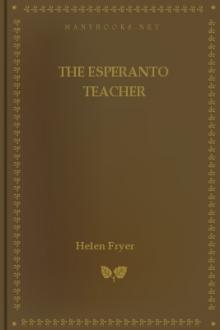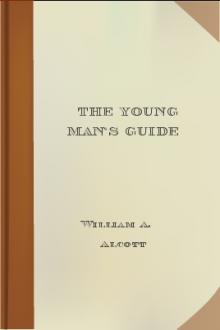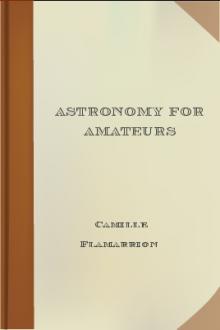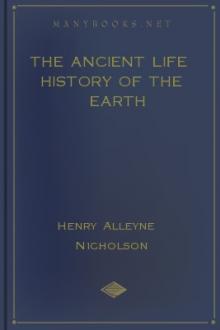Genre Literary Collections. Page - 17

apsed since his death, and yet his ideas, doctrines and teachings are still quoted and accepted without any apparent diminution of their influence. Cicero had in mind an exact prototype of Jefferson when he said, "Homines ad deos nulla re propius accedunt quam salutem hominibus dando."[1]
[1] There is no way by which man can approach nearer to the gods than by contributing to the welfare of their fellow creatures.
Authentic history shows a persistent tendency of the Anglo-Saxon race in the unswerving direction of personal liberty. The inhabitants of the American Colonies revealed a tenacity and self-assertiveness in this direction to a greater extent than had ever been shown in England. The Jeffersonian idea has ever been that there shall be no king; that the sovereign ruler should be placed on the same level and be judged by the same principles as the humblest citizen; that the lords of the manors are entitled to no more privileges than the poorest peasant; that these rights are inalie

cure of diseases by mental means. Müller's observation was in advance of his times, but could not be expected to include the results of the latest researches of modern science.
For a great many years physicians have recognized that not only are all diseases made worse by an incorrect mental attitude, but that some diseases are the direct result of worry and other mental disturbances. The mental force which causes colored water to act as an emetic, or postage-stamps to produce a blister, can also produce organic diseases of a serious nature. The large mental factor in the cause of diseases is generally admitted, and it seems reasonable to infer that what is caused by mental influence may be cured by the same means. There is no restriction in the power of the mind in causing disease, and should we restrict the mind as a factor in the cure? The trouble seems to be in the explanation. People ask, "How can the mind have such an effect upon the body?" and to the answer of this question we must now turn

ig chief," went on Jones, "me go far north--Land of LittleSticks--Naza! Naza! rope musk-ox; rope White Manitou of GreatSlave Naza! Naza!"
"Naza!" replied the Navajo, pointing to the North Star; "no--no."
"Yes me big paleface--me come long way toward setting sun--gocross Big Water--go Buckskin--Siwash--chase cougar."
The cougar, or mountain lion, is a Navajo god and the Navajoshold him in as much fear and reverence as do the Great SlaveIndians the musk-ox.
"No kill cougar," continued Jones, as the Indian's bold featureshardened. "Run cougar horseback--run long way--dogs chase cougarlong time--chase cougar up tree! Me big chief--me climbtree--climb high up--lasso cougar--rope cougar--tie cougar alltight."
The Navajo's solemn face relaxed
"White man heap fun. No."
"Yes," cried Jones, extending his great arms. "Me strong; me ropecougar--me tie cougar; ride off wigwam, keep cougar alive."
"No," replied the savage vehemently.
"Yes," protested Jones, nodding earnestly.
"No," a

Ne,rozo ne estas birdo, rozo estas floro.
LESSON 2.
Every "describing" word, that is, every word which tells the kind orquality of a person or thing, ends in "a," as "granda", large; "rugxa",red.
(A describing word is called an ADJECTIVE).
VOCABULARY.
bEla : beautiful. jUna : young.blAnka : white. matUra : mature, ripe.blUa : blue. nOva : new.bOna : good. nUtra : nutritious.fidEla : faithful. pUra : pure, clean.fOrta : strong. rIcxa : rich.frEsxa : fresh. sAna : well (healthy).
cxiElo : sky, heaven. nEgxo : snow.fEsto : holiday. pAno : bread.frauxlIno : maiden lady, Miss papEro : paper.hOmo : man (human being). tAblo : table.hUndo : dog. vIno : wine.infAno : child.

shoulders. Its fellow on the other side of the legs is prepared in exactly the same manner; and the second trestle is a duplicate of the first, with the exception that the directions of the struts are reversed relatively to the C piece, to preserve the symmetry--which, however, is not an important point.
[Illustration: FIG. 5.--End elevation of joiner's bench.]
Back and Front.--The only operation to be performed on the front piece B and the back G is the notching of them both on the inside faces at the centre to take the ends of the bearer F, which performs the important function of preventing any bending of the top planks. Lay the boards together, top edges and ends level, and mark them at the same time. The square is then used on the faces to give the limits for the notches, which should be 1/4 inch deep and chiselled out carefully.
Draw cross lines with your square 3 inches from each end of both pieces, on the inside, to show where the legs are to be. Bore holes in the boards for the

hionable education in fault. 6. Sobriety. Definition of the term. An anecdote. Love of mental and bodily excitement usually connected. 7. Industry. How to judge whether a person is industrious. 8. Early rising. A mark of industry. Late rising difficult of cure. 9. Frugality. Its importance shown. 10. Personal Neatness. Its comforts. 11. A good temper. Its importance illustrated. 12. Accomplishments. 263-305
CHAPTER VII.
--CRIMINAL BEHAVIOR.
Section I. Inconstancy and Seduction.--Constancy. Its importance illustrated by an example. Cruelty of sporting with the affections of a female. Opinion of Burgh. 306-313
Section II. Licentiousness.--Most common in cities. New Orleans. Hint to legislators. A horrid picture. Not wholly imaginary. Avoid the first erring step. Example of premature decrepitude. Anecdote of C. S. Solitary vice. This vice compared with intemp

sentials of Astronomy in twelve lessons for amateurs, will not make astronomers or mathematicians of my readers--much less prigs or pedants. They are designed to show the constitution of the Universe, in its grandeur and its beauty, so that, inhabiting this world, we may know where we are living, may realize our position in the Cosmos, appreciate Creation as it is, and enjoy it to better advantage. This sun by which we live, this succession of months and years, of days and nights, the apparent motions of the heavens, these starry skies, the divine rays of the moon, the whole totality of things, constitutes in some sort the tissue of our existence, and it is indeed extraordinary that the inhabitants of our planet should almost all have lived till now without knowing where they are, without suspecting the marvels of the Universe.
* * * * *
For the rest, my little book is dedicated to a woman, muse and goddess--the charming enchantress Urania, fit companion of Venus, ranking even above her in the c

ssity. Ordinary writing needs some use of commas to indicate the sense and to prevent ambiguity.
Always remember that the real business of the comma is just that of helping the meaning of the words and of preventing ambiguity by showing clearly the separation and connection of words and phrases. If there is possibility of misunderstanding without a comma, put one in. If the words tell their story beyond possibility of misunderstanding without a comma, there is no reason for its use. This rule will serve as a fairly dependable guide in the absence of any well recognized rule for a particular case, or where doubt exists as to the application of a rule.
Reversed, and usually in pairs, commas mark the beginning of a quotation.
In numerical statements the comma separates Arabic figures by triplets in classes of hundreds: $5,276,492.72.
In tabular work reversed commas are used as a sign for ditto.
SCHOOLS TEACHING PRINTING
Boston: Boston Typothetæ School of Printing.

Microscopic section of a calcareous breccia. 7. Microscopic section of White Chalk. 8. Organisms in Atlantic Ooze. 9. Crinoidal marble. 10. Piece of Nummulitic limestone, Pyramids. 11. Microscopic section of Foraminiferal limestone--Carboniferous, America. 12. Microscopic section of Lower Silurian limestone. 13. Microscopic section of oolitic limestone, Jurassic. 14. Microscopic section of oolitic limestone, Carboniferous. 15. Organisms in Barbadoes earth. 16. Organisms in Richmond earth. 17. Ideal section of the crust of the earth. 18. Unconformable junction of Chalk and Eocene rocks. 19. Erect trunk of a Sigillaria. 20. Diagrammatic section of the Laurentian rocks. 21. Microscopic section of Laurentian limestone. 22. Fragment of a mass of Eozoön Canadense. 23. Diagram illustrating the structure of Eozoön. 24. Microscopic section of Eozoön Canadense. 25. Nonionina and Gromia. 26. Group of shells of living Foraminifera. 27. Diagram

expansive gaze over all allying and allied species, the intellect bodies forth to its vision the full appointed form of natural majesty; and after having experienced the manifold analogies and differentials of the many, is thereby enabled, when it returns to the study of the one, to view this one of human type under manifold points of interest, to the appreciation of which the understanding never wakens otherwise. If it did not happen that the study of the human form (confined to itself) had some practical bearing, such study could not deserve the name of anatomical, while anatomical means comparative, and whilst comparison implies inductive reasoning.
However, practical anatomy, such as it is, is concerned with an exact knowledge of the relationship of organs as they stand in reference to each other, and to the whole design of which these organs are the integral parts. The figure, the capacity, and the contents of the thoracic and abdominal cavities, become a study of not more urgent concernment to t